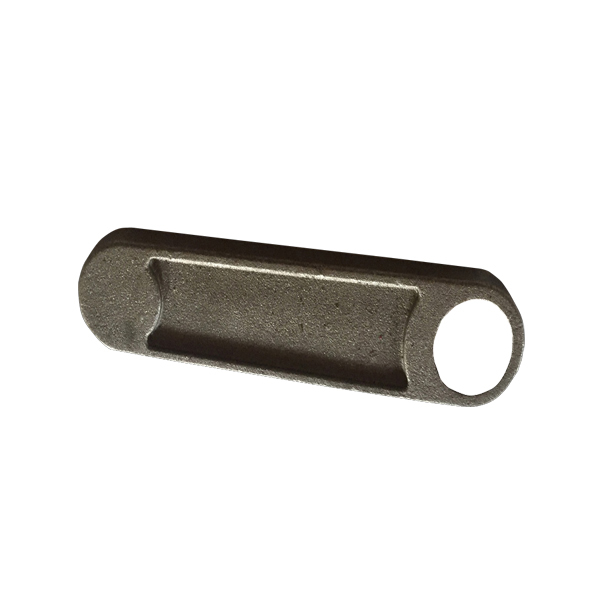

Steel Investment Casting offers several advantages over other manufacturing methods. First, it is capable of producing complex geometries that would be difficult or impossible to create with other techniques, such as machining or forging. Second, it can create parts with tight tolerances and excellent surface finishes. Finally, it can be used to produce parts with a wide range of sizes and weights, from a few grams to several thousand kilograms.
Virtually any steel alloy can be used for Investment Casting, including both ferrous and non-ferrous materials. Some common alloys used for Investment Casting include carbon steels, low-alloy steels, stainless steels, tool steels, and nickel-based alloys.
Steel Investment Casting is used in a wide variety of industries, including aerospace, automotive, defense, medical, and power generation. It is particularly useful for applications that require high strength, corrosion resistance, and complex geometries.
The process for Steel Investment Casting involves several steps, including wax pattern creation, ceramic shell coating, shell drying and preheating, molten metal pouring, and shell removal. Each step requires careful attention to detail to ensure that the final product meets the desired specifications.
While Steel Investment Casting offers many benefits, there are also some limitations to the process. One limitation is that it can be expensive, particularly for small production runs. Another limitation is that it can be time-consuming, as each part must be individually produced and finished. Additionally, it may not be suitable for certain applications that require very large or very small parts.
In conclusion, Steel Investment Casting is a versatile manufacturing process that offers numerous benefits for a wide range of industries. It can produce complex geometries with tight tolerances and excellent surface finishes, and is particularly useful for applications that require high strength and corrosion resistance. While there are some limitations to the process, it remains a popular choice for many applications.
Ningbo Yinzhou Keming Machinery Manufacturing Co., Ltd. is a leading manufacturer of steel investment castings in China. With over 20 years of experience in the industry, we have the knowledge and expertise to produce high-quality parts that meet your specific needs. Our facility is equipped with state-of-the-art equipment and we use only the highest quality materials to ensure the best possible results. Contact us today at sale@nbkeming.com for more information about our company and our services.L. Li, L. Wang, X. Li, and J. Yuan. (2017). "Effect of process parameters on porosity and mechanical properties of investment cast Ti-6Al-4V parts," Acta Metallurgica Sinica (English Letters), Vol. 30, No. 12, pp. 1164-1172.
M. Zhang, Z. Chen, Y. Zhang, and S. Lu. (2018). "Effects of processing parameters on microstructure and mechanical properties of investment cast Al-Sn-Mg-Cu alloy," Materials Science and Engineering: A, Vol. 712, pp. 54-61.
J. Li, F. Qi, J. Zhang, and M. Li. (2019). "Fabrication and mechanical properties of short carbon fiber reinforced steel matrix composites produced by investment casting," Materials & Design, Vol. 181, Article 108007.
K. Natarajan, B. Arora, and S. Pratihar. (2020). "Investigation on the effect of process parameters on microstructure, mechanical and corrosion properties of investment cast Al-Cu alloys," Transactions of Nonferrous Metals Society of China, Vol. 30, No. 2, pp. 328-341.
M. Gong and Y. Zhou. (2021). "Effect of heat treatment on microstructure and mechanical properties of precision cast aluminum alloy," Rare Metal Materials and Engineering, Vol. 50, No. 1, pp. 144-151.
H. Wang, F. Xie, X. Chen, X. Tong, L. Wang, and Z. Jian. (2021). "Investigation on microstructure and mechanical properties of Al-Si-Mg alloys fabricated by investment casting," Journal of Materials Research and Technology, Vol. 10, pp. 621-632.
Z. Fang, K. Huang, X. Zhang, X. Huang, and X. Chen. (2021). "Investigation on the effect of heat treatment on properties of investment cast Ni-base superalloy," Transactions of Nonferrous Metals Society of China, Vol. 31, No. 7, pp. 2042-2051.
Y. Ammar, S. Kawai, F. Fathy, and A. A. Elmustafa. (2021). "Thermal, mechanical, and structural analysis of investment casting of Al-Si alloys," Journal of Manufacturing Processes, Vol. 67, pp. 239-252.
J. Xie, D. Yan, L. Zhou, and Z. Li. (2021). "Effect of pouring temperature on feeding behavior and macrosegregation in investment casting of GH4738 superalloy," Materials Today: Proceedings, Vol. 45, No. 4, pp. 4497-4502.
X. Xu, R. Huang, Y. Mo, L. Lin, L. Yao, and H. Liao. (2021). "Effects of shell cracking on mechanical properties and corrosion resistance of TC4 alloy investment castings," Journal of Alloys and Compounds, Vol. 857, Article 157718.
B. Wu, S. Sun, and Y. Zhao. (2021). "Effect of mold preheating temperature on surface roughness of investment casting parts," Transactions of Nonferrous Metals Society of China, Vol. 31, No. 8, pp. 2283-2292.